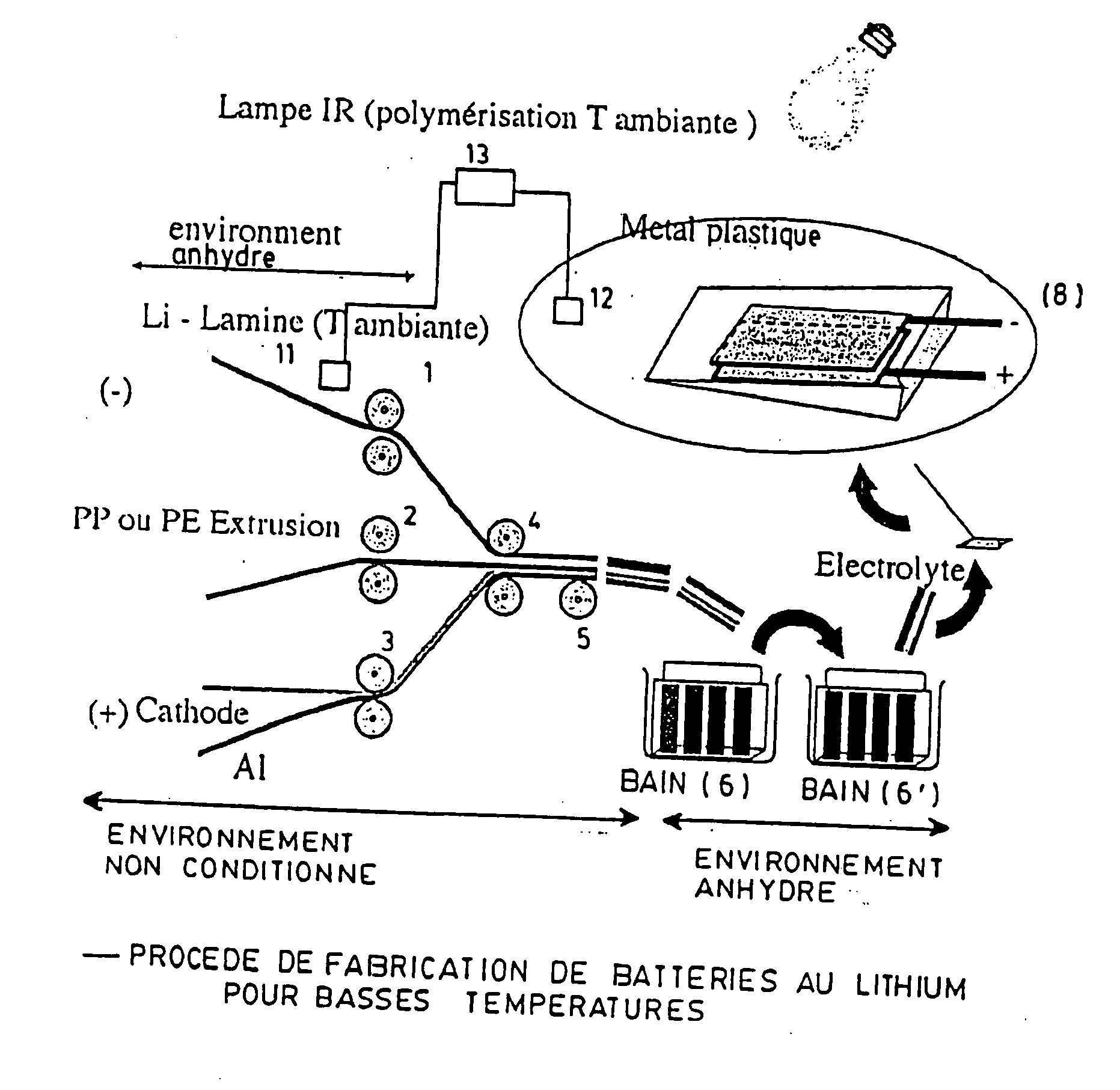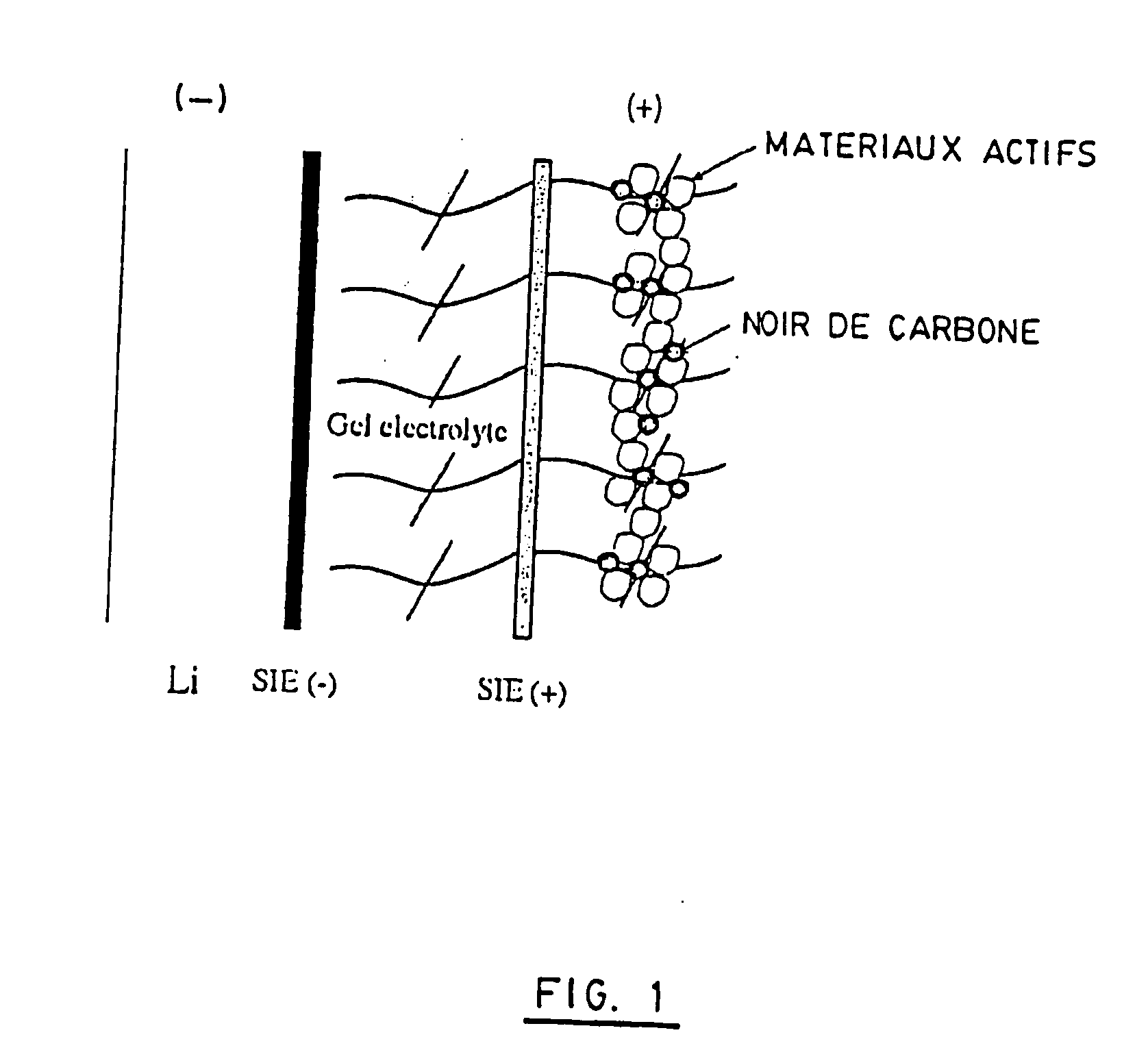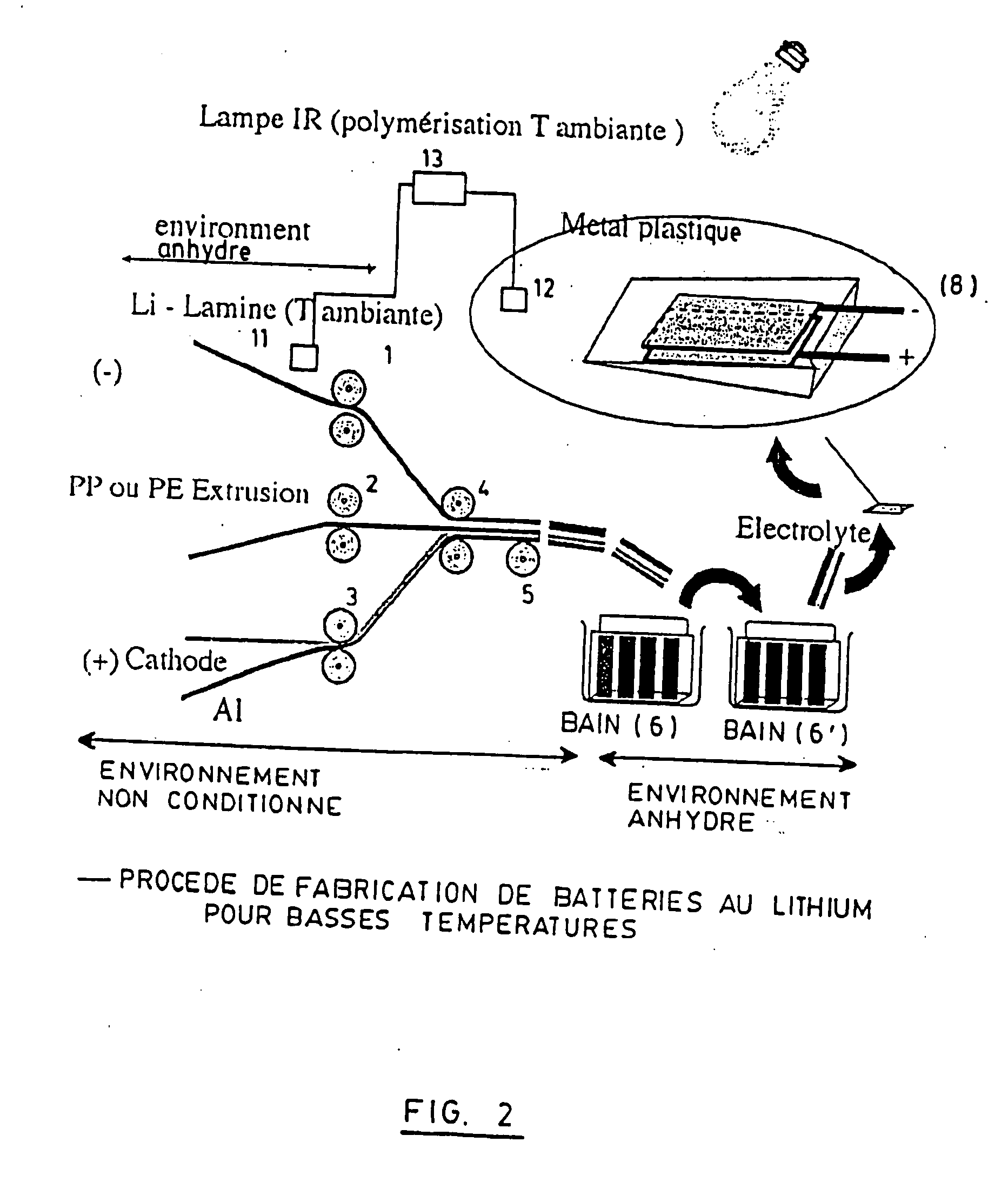Rechargeable electrochemical accumulator
- Summary
- Abstract
- Description
- Claims
- Application Information
AI Technical Summary
Benefits of technology
Problems solved by technology
Method used
Image
Examples
example 1
ith Metallic Lithium and Gel—Gel (e-beam)
[0155] The entire process for preparing the films and assembling the corresponding accumulator hereinafter used is carried out continuously in a glove box with temperature regulation and under argon, in accordance with the schematic representation shown in FIG. 2.
[0156] The fabrication of the metallic lithium extrudate by extrusion is carried out at 25° C. in the anhydrous glove box.
[0157] The metallic lithium film is prepared by extruding a bar of metallic lithium. The extrudate obtained, which is about 250-micrometer thick, is laminated to produce a continuous film about 34-micrometer thick.
[0158] The cathode is produced using LiFePO4 and carbon black mixed with the poly(vinylidene fluoride) (PVDF) binder marketed under the trademark Kruha: KF-1700™, in a mass ratio of 87:3:10 in the n-methyl pyrolidone solvent.
[0159] This mixture is applied on an aluminum collector using the Doctor Blade™ method. The electrode thus obtained is dried un...
example 2
guration—Metallic Lithium Battery Compared to a Li-ion Battery—Gel (Thermal)
[0165] A) Metallic lithium battery
[0166] The cathode is prepared using the same method as in Example 1. In particular, the temperatures for extrusion of the metallic lithium, lamination of the corresponding extrudate and crosslinking of the crosslinkable polymer / plasticizing solvent / lithium salt mixture are adjusted to 25° C.
[0167] The anode is prepared from spherical natural graphite mixed with a poly(vinylidene fluoride) (PVDF) binder (Kruha: KF-1700™) and n-methyl pyrolidone in a mass ratio of 90:10. This mixture is applied on a copper collector using the Doctor Blade™ method. The graphite electrode thus obtained is dried under vacuum at 120° C. for 24 hours.
[0168] The polymer electrolyte is prepared from the ERM-1 ELEXCEL™ (four branches) mixture from DKS (lot 8K1201) with 1.5 moles of LiBF4 in EC / GBL (1:3) from Tomiyama, to which is added 1000 ppm of the thermoinitiator Perkadox 16™ from the company ...
example 3
ing of the Importance of Maintaining the Lamination Temperature at 25° C. and the Crosslinking Temperature at 80° C.
[0177] The process used is illustrated in FIG. 2. Lamination of the metallic lithium extrudate is carried out at 25° C.
[0178] The polymeric gel electrolyte is prepared from a mixture consisting of 10% of the four-branched ERM-1 ELECEL™ polymer marketed by the company DKS and 90% of 1.5M LiFSI in the EC+GBL (1:3) plasticizing mixture, to which are added 2000 ppm of the crosslinking agent used in Example 1.
[0179] The cathode is composed of a LiFePO4 film and the separator is made of a polyethylene film.
[0180] Crosslinking of the crosslinkable polymer mixture is carried out at 80° C. for 3 hours, a temperature different from the temperature imposed during the lamination step.
[0181] Cycling conditions are 2.5 to 4 volts, with a discharge rate of C / 3 and a charge rate of C / 1.
[0182] The cycling curve displayed in FIG. 5 clearly shows a rapid drop in capacity as a functi...
PUM
 Login to View More
Login to View More Abstract
Description
Claims
Application Information
 Login to View More
Login to View More - R&D
- Intellectual Property
- Life Sciences
- Materials
- Tech Scout
- Unparalleled Data Quality
- Higher Quality Content
- 60% Fewer Hallucinations
Browse by: Latest US Patents, China's latest patents, Technical Efficacy Thesaurus, Application Domain, Technology Topic, Popular Technical Reports.
© 2025 PatSnap. All rights reserved.Legal|Privacy policy|Modern Slavery Act Transparency Statement|Sitemap|About US| Contact US: help@patsnap.com



